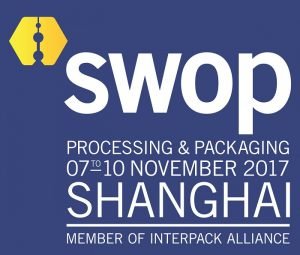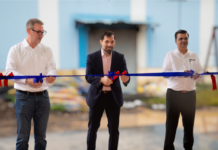The Save Food initiative marked its debut on 8 November during the Shanghai World of Packaging (SWOP) 2017 in China, which was held from 7 to 10 November in Shanghai. Just like India, China too faces a huge problem of food wastage due to inadequate harvesting, processing and packaging, especially in the countryside. According to data from China’s State Administration of Grain in 2014, 35% of China’s annual food production was lost or wasted.
The Save Food initiative is an endeavor by the Food and Agriculture Organization (FAO) and Messe Dusseldorf to encourage dialog between the industry, research, politics, and civil society on food losses. The initiative seeks to bring together stakeholders from the food supply chain for conferences and projects and supports them in developing effective measures. It also aims to raise public awareness on the impact of food waste.
The idea behind launching the Save Food initiative in China during SWOP was to address the vast food waste problem in the country, as well in the broader region. More than 200 delegates from the food processing and packaging sectors attended the meeting and discussed in depth ways to reduce food loss and waste through advanced processing and packaging techniques, innovative packaging materials and processing across the entire industry chain.
The session began with a welcome speech by Bernd Jablonowski, global portfolio director of processing and packaging, Messe Dusseldorf. Vincent Martin, representative, FAO China and DPR Korea delivered a speech on ‘reducing global food waste through innovation and partnership’.
“Packaging plays an important role in reducing food loss and waste throughout food supply chains, and we need action now,” said Martin. He also stressed as the problem of food waste becomes more complex and global, the solution requires greater focus on innovation. “This cannot be achieved by any company, government or any other institutions. We all need to work together,” he said, adding that packaging is crucial for reduction of food loss and waste along the food supply chain.
Steven Van Geel of Tomra Sorting Technology talked about food safety, yield optimization and energy efficiency from farm to folk. He highlighted how automation in sorting helps in removing bad and retaining good elements of food, vegetables, etc during the processing stage. This helps in maximizing the yields and viability.
An interesting presentation was delivered in the pre-lunch session by Stefan Glimm, director general, Global Aluminium Foil Roller Initiative (GLAFRI) on the topic ‘The role of packaging to reduce food waste’.
Glimm highlighted the role of aluminum foil packaging, which helps to prevent spoilage and wastage of valuable food, the production of which requires significantly more resources than the production of the packaging itself. Aluminum foil saves more resources than it consumes and is part of the solution to reducing food waste, he said. By combining materials for tailored barrier properties, multilayer packaging facilitates extended shelf life and ensures preservation of quality throughout the value chain.
An example that Glimm gave was that of milk and how aluminum foils help in extending the shelf life. Just 1.5 grams of aluminum foil in a beverage carton (of 28 grams) enable 1 liter of milk to be transported and stored for several months without refrigeration.
 The post-lunch session was kick-started by Zheng Wei, Xiamen Changsu Industrial Co., who informed the audience about how high barrier BOPA film can be helpful in food packaging and reducing waste. He said that BOPA has excellent mechanical properties including strength, puncture resistance and impact resistance. Some other salient features that he talked about were high odor barrier, good printability, excellent chemical resistance and wide end use temperature range.
The post-lunch session was kick-started by Zheng Wei, Xiamen Changsu Industrial Co., who informed the audience about how high barrier BOPA film can be helpful in food packaging and reducing waste. He said that BOPA has excellent mechanical properties including strength, puncture resistance and impact resistance. Some other salient features that he talked about were high odor barrier, good printability, excellent chemical resistance and wide end use temperature range.
After the presentation on BOPA, Colin Chao Zhang, of Beijing Lantsai Tech. Co. talked on the topic of how time-temperature indicators can be used for food quality control during the entire supply chain. This was followed by a presentation by Max Loh of Printpack (Suzhou) Packaging Co., who spoke on how barrier packaging technology can enable new markets and applications.
The day was wrapped up by Peter Thoeysen, global marketing director, Chr. Hansen who talked about ‘bioprotection and food waste’. His presentation focused on reducing food waste in dairy with good bacteria. He informed that almost 20% of all dairy products are wasted globally and overwhelming majority of wastage happens due to date and shelf life related issues.
Thoeysen talked about FreshQ, a bioprotective solution from Chr. Hansen. FreshQ cultures are based on unique bacteria strains found within lactic acid bacteria species that are normally used in dairy products. They come in several versions specifically targeting fresh dairy and cheese applications.
Bioprotection is a natural way to protect against spoilage and harmful contamination in food, he said, adding that this not only helps to keep products fresh and safe, it also helps to build and protect brands.












